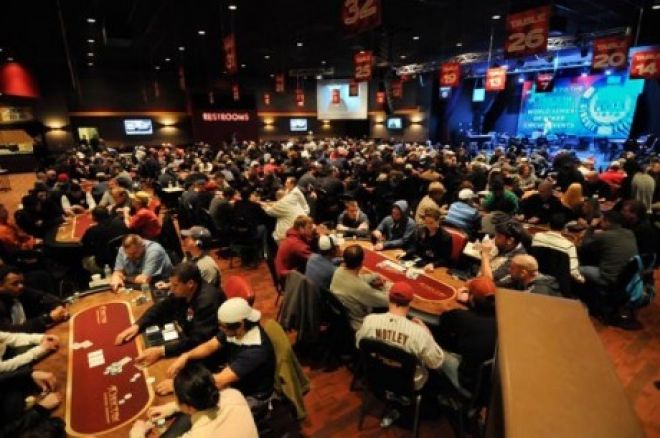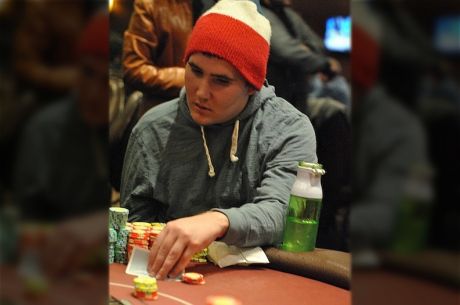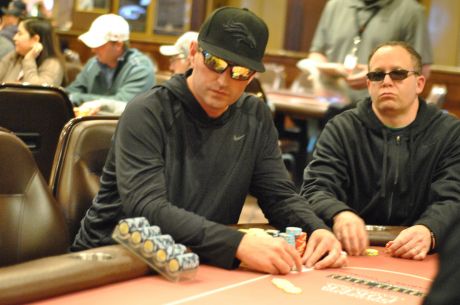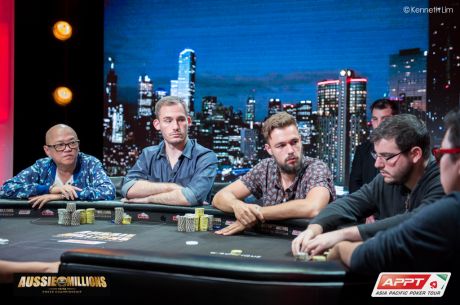Potential Profit: Getting Creative With Non-Standard Preflop Opening Raises

Covering live poker tournaments for a living affords me the opportunity to see countless thousands of hands played out, many of which offer interesting and potentially valuable insights into how players �� both amateurs and professionals �� play the game. In this ongoing series, I��ll highlight hands I��ve seen at the tournaments I��ve covered and see if we can glean anything useful from them.
For the next two weeks, we��ll take a small departure from the usual coverage and go over a couple of hands played by the author.
The Scene
I��m playing in a World Series of Poker Circuit $365 reentry tournament, the first of three starting flights. Most of the players in these tournaments are relatively inexperienced, and my more seasoned opponents can be expected to take an aggressive approach to this format, knowing they have two more bullets in Flight 1b and Flight 1c should they bust out today.
The current blinds are 250/500 with a 50 ante, and there��s still a way to go before everyone bags for the night. I��ve been moved to this table relatively recently, within the past hour. It��s a bit tougher than my first few tables, as some of my opponents seem to be on the experienced side for a WSOP-C $365.
The Action
I watched as a younger player whom I hadn��t seen play a hand since I arrived at the table opened from under the gun for 1,400. Action folded to me in the small blind where I called with 10x10x and a stack of about 30,000. The player in the big blind came along as well with about 35,000 in his stack. The opener had about 25,000.
The flop came down 8x6x3x rainbow, and action checked to the preflop raiser, who bet 1,600, only about a third of the pot. I check-raised to 4,400, and the big blind thought for awhile before pushing out another raise to 8,400 total. The opener immediately announced he was all in, and I considered the situation briefly before folding.
The big blind chuckled and said he didn��t think he could fold, but nonetheless mulled things over for a few minutes while deciding whether or not to call the shove. Ultimately, he did make a reluctant call and showed J?6? for second pair. His opponent showed 8?6? for a flopped top two.
The turn and river both brought nines, and the under-the-gun player doubled up with nines and eights, while the big blind was left with a fraction of the stack with which he had started the hand.
Concept and Analysis
Starting this hand from the opener��s perspective, he comes into the pot with a pretty weak hand considering his position, just a suited one-gapper. This isn��t always a wise idea, but he has a few things going for him. For one thing, he��s under the gun and has been playing tight, so his raise has a better than normal chance of taking down the blinds and antes. For another, if he flops a big hand, his strength will be very well disguised.
When he gets calls from both blinds and flops top two pair, it��s a dream scenario as he has a monster hand and position on both opponents. His small bet on the flop induces two raises �� surprising action on such a dry board.
From where I��m sitting in the small blind, the bet looks like a standard continuation bet and could represent a strong overpair, but it could also be just a couple of overcards hoping his opponents missed. I decided to raise, as there are a bunch of bad turn cards for my hand. There��s a good chance I have the best hand right now, but I would be in the dark about where I��m at if a card higher than a 10x came on the turn. Furthermore, I don��t want to let the big blind continue cheaply if he has a hand like 8x7x or 5x4x.
When there are two raises behind me, including a snap-shove from the opener, it��s a pretty easy fold with tens. In the end, the big blind is caught with his pants down making a move with second pair. He tried representing a monster hand on the flop �� a set or two pair �� as he probably never imagined the big blind had hands like 8?6? in his range because he��d been playing tight.
I��ve talked before about how you can find yourself in tough spots opening weak hands in early position, but this hand illustrates the potential good that can come out of such non-standard opens. For starters, if you flop especially well like the UTG opener did in this example, your opponents will never see it coming and give you more action than their hands warrant. Secondly, if they have been paying attention to how you��ve been playing, they may peg boards that hit you as good boards for them and bad for you, and try to make moves thinking they can get you to fold.
The big blind knew a raise would squeeze the opener with me still to act behind him, and he likely thought he might be able to get some overpairs to fold. It all worked out for the player under the gun, who found himself doubling up in a perfect spot.
Want to stay atop all the latest in the poker world? If so, make sure to get PokerNews updates on your social media outlets. Follow us on Twitter and find us on both Facebook and Google+!








